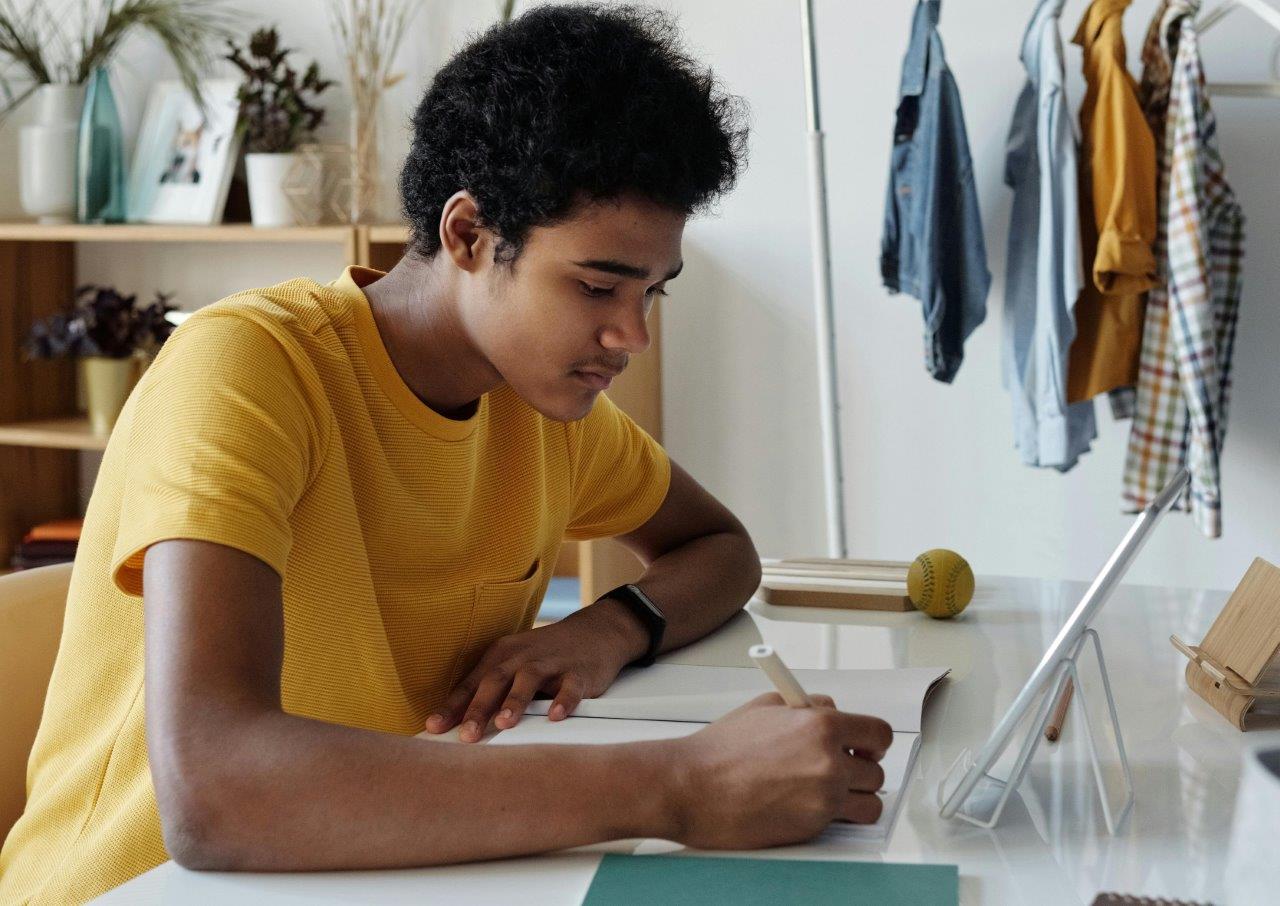Dr Anabela Malpique, a senior lecturer at Edith Cowan University’s School of Education, and her research team, have just conducted a meta-analysis to examine studies published between 2000-2022, comparing the effects of writing by hand or keyboarding on primary students’ writing performance (Foundation-Year 6).
She says while the study has highlighted the importance of teaching handwriting in primary school education, despite children growing up in a digital age, it has also shown how important it is that handwriting be prioritised in high school.
“I’m doing some consultancy for WA’s SCSA (School Curriculum and Standards Authority),and unlike what is happening with the national curriculum, here in WA we are still reinforcing the development of handwriting beyond primary years from Year 7 to Year 10,” Malpique says.
“That’s because we are hearing from so many principals and teachers that in ATAR, for example, kids are producing very, very difficult handwriting. So in terms of legibility it’s a major issue.”
Malpique says the skill is not reinforced nearly enough as students progress beyond primary school.
She cites the critical aspect of handwriting for note-taking, for example.
“Handwriting needs to be reinforced in secondary schooling, for example, so that kids are still able to take notes by hand to emphasise learning and memory, etc – and again, there are numerous examples where they will sit down and have to take an exam by paper and pencil.”
Prior to entering high school, the research findings showed that primary students produce higher quality writings using paper and pen(cil) than when using a keyboard.
In a recent large-scale project examining the writing performance of Year 2 children (544 students, 47 classrooms) in WA, it was also found that children wrote longer and higher-quality handwritten texts.
“Handwriting skills are connected to improved spelling [as well],” Malpique says.
“Handwriting also promotes our capacity to learn and memorise information.”
The literacy expert says globally, there are many questions that remain on the validity of focusing only on handwriting, on paper and pencil, in the first years of schooling, given the current digital divide.
“So, for example, in Norway, there’s an experiment involving schools making a decision around when to introduce paper and pencil and when to introduce computers [to young writers],” she explains.
“So we have children being introduced to paper and pencil only in Year 4, having already been introduced firstly to writing using keyboards with computers.”

Australian kids are introduced to writing almost exclusively by hand, and when introduced to computers they find it difficult, because having grown up in a tablet world of iPads and touch screens, few have an idea how to use a keyboard. PHOTO: Julia M Cameron
Malpique says at this stage, the writing community, and the research in this area, is very much about trying to understand the development of this.
But on the other hand, she says, there is strong neuroscience research, reinforcing the needs of handwriting and the contributions of handwriting not only to help us write a text, but for learning and developing learning, cognition and memory.
“So there is something very, very unique about paper and pencil that we need to reinforce, for teachers to keep on teaching handwriting, even in a digital world,” she says.
Another quite serious concern of researchers is the lack of specific education in the digital version of handwriting – typing.
“We conducted a national survey two years ago, that was published in 2023, where we surveyed primary school teachers about their preparedness, the instructional practices for teaching writing,” Malpique says.
“And we found that teachers reported really placing a stronger focus in primary education on the teaching of spelling and on the teaching of grammar – with not much focus on the teaching of handwriting, not at all on teaching keyboarding or typing.”
That’s a problem, obviously, she says, especially given the fact that Australian kids are introduced to writing almost exclusively by hand, and when introduced to computers they find it difficult, because having grown up in a tablet world of iPads and touch screens, few have any idea how to use a keyboard.
“It’s often presumed that children are digital natives because they have grown up with different technologies around them – so they'll be naturally able to write texts using digital devices,” Malpique says.
Keyboarding, she says, much like handwriting, involves a complex set of cognitive, visual and motor processes, requiring frequent practise and instruction.
“It involves learning the location of the keys on a keyboard, combined with spatial skills of positioning, and moving fingers to press the keys in the correct sequence.
“Students need time to practise so they can move beyond the ‘hunt and peck’ motion, which is typical of novice keyboarders.”

Handwriting needs to be reinforced in secondary schooling, so that teenagers remain capable of making notes by hand to emphasise learning and memory, etc.
One thing she says experts in the field also know is the importance of transcription skills.
Transcription skills refer to spelling and how quickly and accurately children can handwrite or type, also called ‘automaticity’.
“Our research has consistently shown that young children’s spelling and capacity to automatise handwriting and typing predicts the quality and the length of their texts,” Malpique says.
“Simply put, children can better focus on what they want to say when handwriting or typing becomes automatised.
“Writing resembles other complex skills, such as driving a car. Unless we automatise the management of gears, pedals, blinkers, and wipers (transcription skills) we cannot select the most efficient or the most scenic route (creating texts).”
As well, the emergence of generative AI systems are revolutionising the way in which we communicate using the written word.
This digital shift is likely to impact writing acquisition and development, and so researchers are stressing the urgency of preparing beginning writers to become ‘hybrid writers’ – that is, able to produce paper and computer-generated texts with a similar level of proficiency.
“There are a growing number of issues that we as writing researchers are thinking about – but what we know at this stage is that we need to actually reinforce the teaching of writing and the development of writing skills in schools, because writing is thinking, right?
“And if we take that from kids, if we stop that, and we allow computers to do that for us, well, that is of critical concern,” Malpique concludes.
“Here, as in other parts of the globe, there is always a very, very strong focus on the importance of the teaching of reading, which is critical and as it should be, but we also need to focus on writing – because one lives with the other.”
Teaching typing and handwriting: a few tips for teachers
As a complex skill, writing needs practise and perseverance. By working in collaboration with families, teachers can maximise opportunities for practise and enjoyment of writing or typing:
- Dedicate time for practise: Teachers can build regular practise routines in class and send home mini-tasks such as 10-minute writing or spelling prompts (writing a shopping list; finish a story; spot the spelling mistakes).
- Become a fellow writer by modelling: This means joining the writing as opposed to “policing” the writing. As you write you can talk about what you will write (planning), and you can share ideas about how you can make your writing clearer or more exciting.
- Talk about your mistakes and find ways of correcting your writing: When adults talk about their errors or doubts, they make them a natural part of the process. When they correct them, they show children strategies to revise their own writing.
- Read what you have written: Reading what you have written provides opportunities for correction and celebration. Praise children’s risky attempts such as using new words or experimenting with expressions.
- Give children choice: The more children are in control of the process, the more likely they will enjoy it. They can choose a topic, they can mix art and letters, they can choose paper or keyboard!
- Showcase the writing: Make children’s writing visible on your walls, on your fridge or as wallpapers on your devices. Writing samples can also be a great way to show children how much they have grown as writers.
- Aim for automaticity: Find opportunities that let children see the importance and purpose of writing and keyboarding in their daily lives.
To read Dr Malpique and colleagues’ research Effect sizes of writing modality on K-6 students’ writing and reading performance: a meta-analysis, click here.














